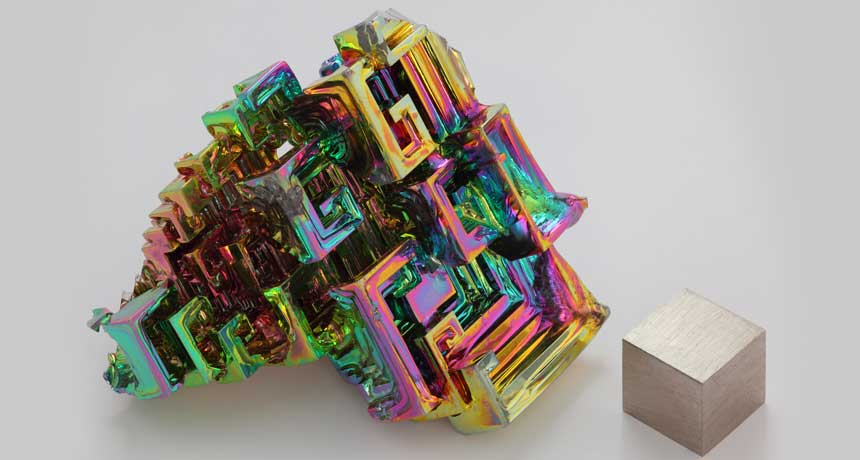Despite lack of free electrons, bismuth superconducts

An oddball superconductor is the first of its kind — and if scientists are lucky, its discovery may lead to others.
At a frigid temperature 5 ten-thousandths of a degree above absolute zero, bismuth becomes a superconductor — a material that conducts electricity without resistance — physicists from the Tata Institute of Fundamental Research in Mumbai, India, report online December 1 in Science.
Bismuth, a semimetallic element, conducts electricity less efficiently than an ordinary metal. It is unlike most other known superconductors in that it has very few mobile electrons. Consequently, the prevailing theory of superconductivity doesn’t apply.
The result is “quite important,” says theoretical physicist Marvin Cohen of the University of California, Berkeley. New ideas — either a different theory or a tweak to the standard one — are needed to explain bismuth’s superconductivity. “It might lead us to a better theory of superconductivity with more details,” Cohen says.
An improved theoretical understanding might lead scientists to other superconductors, potentially ones that work at more practical temperatures, says Srinivasan Ramakrishnan, a coauthor of the paper. “It opens a new path for discovering new superconducting materials.”
Physicists’ ultimate goal is to find a superconductor that operates at room temperature. Such a material could be used to replace standard metals in wires and electronics, providing massive energy savings and technological leaps, from advanced supercomputers to magnetically levitating trains.
To confirm that bismuth was superconducting, Ramakrishnan and collaborators chilled ultrapure crystals of bismuth, while shielding the crystals from magnetic fields. Below 0.00053 kelvins (about –273° Celsius), the researchers observed a hallmark of superconductivity known as the Meissner effect, in which the superconductor expunges magnetic fields from within itself.
In the standard theory of superconductivity, electrons partner up in a fashion that removes resistance to their flow, thanks to the electrons’ interactions with ions in the material. But the theory, known as the Bardeen-Cooper-Schrieffer, or BCS, theory, works only for materials with many free-floating electrons. A typical superconductor has about one mobile electron for each atom in the material, while in bismuth each electron is shared by 100,000 atoms.
Bismuth has previously been made to superconduct when subjected to high pressure or when formed into nanoparticles, or when its atoms are disordered, rather than neatly arranged in a crystal. But under those conditions, bismuth behaves differently, so the BCS theory still applies. The new result is the first sign of superconducting bismuth in its normal form.
Another class of superconductors, known as high-temperature superconductors, likewise remains enigmatic (SN: 8/8/15, p. 12). Scientists have yet to reach a consensus on how they work. Though these superconductors must be cooled, they operate at relatively high temperatures, above the boiling point of liquid nitrogen (77 kelvins, or –196° Celsius).
Bismuth’s unusual behavior provides another handle with which to investigate the still-mysterious phenomenon of superconductivity. In addition to its low electron density and unexpected superconductivity, bismuth has several anomalous properties, including unusual optical and magnetic behavior. “A good global picture is missing” for explaining the abnormal element, says theoretical physicist Ganapathy Baskaran of the Institute of Mathematical Sciences in Chennai, India. “I think it’s only a tip of an iceberg.”